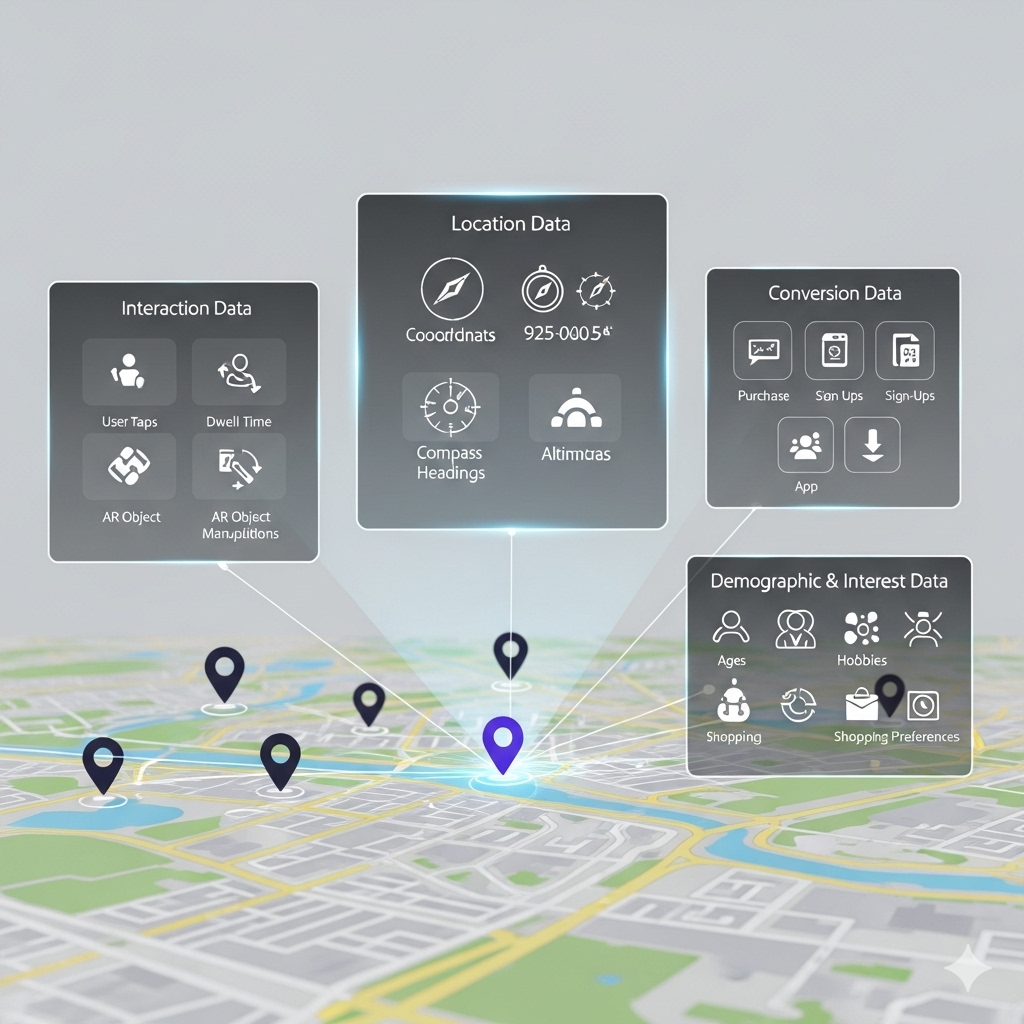AR Geolocation Data Analysis: The Key to Optimizing Marketing Campaigns
Introduction
Modern marketing cannot exist without data. We are already familiar with analyzing data from websites, social media, and email marketing to understand online customers. However, a new and highly valuable source of insights is emerging: AR Geolocation data.
This data not only reveals what customers do online but also shows how they interact with brands in the real world, at specific locations. Capturing and analyzing this source of data is the key to optimizing campaigns and making marketing decisions based on solid evidence.
Key AR Geolocation Data Types to Focus On
1. Location Data
Meaning: Reveals where customers go, at what time, and how long they stay.
Usage: Helps marketers understand customer mobility patterns, popular destinations, and time spent there. You can identify high-engagement areas to expand campaigns or improve performance in low-engagement locations.
2. Interaction Data
Meaning: Records user actions in the AR app or platform, such as app opens, AR object interactions, mini-games played, average session duration, and gestures like swiping, tapping, or taking photos.
Usage: Allows marketers to measure content engagement, understand user behavior, and optimize campaign flows. For example, if users interact only with one part of the campaign, you know which areas need improvement.
3. Conversion Data
Meaning: Tracks how many vouchers are redeemed, how many customers made purchases after AR interactions, or the completion rate of specific shopping actions.
Usage: This is the most important data for calculating ROI (Return on Investment), proving campaign effectiveness, and convincing leadership to reinvest.
4. Demographic & Interest Data
Meaning: Based on user accounts or interaction behavior, marketers can identify age, gender, and interests.
Usage: Helps segment customers. For example, if users frequently interact with virtual sports items, they can be placed in the sports-lover customer segment.

Analyzing Data to Optimize Campaigns
Optimizing Locations
If data shows that a store receives high AR engagement but low conversion, marketers should examine in-store factors (product placement, sales staff) or adjust AR content to align better with sales goals.
Optimizing Content
If an AR mini-game has a high drop-off rate, adjust its difficulty or rewards to retain users. On the other hand, if certain interactive content gets a lot of shares, you should replicate or expand that content in future campaigns.
Segmentation & Personalization
Interaction data across different locations can help group customers into segments such as:
Voucher hunters
Entertainment seekers
Explorers
From there, marketers can design personalized campaigns for each group.
Example: Send a voucher-hunting event notification to “voucher hunters,” or invite “explorers” to join the latest AR experience.

AR Geolocation and Big Data – The Future of Analytics
Bridging online & offline: AR Geolocation data reveals offline behavior, and when combined with online data, marketers can build a holistic customer journey map from online to offline and back again.
Enhancing predictive models: With detailed location and behavioral data, customer behavior prediction becomes more accurate. For example, you can forecast when a customer is likely to visit a store or purchase a specific product.
Challenges in AR Data Analysis
Privacy & security: Location and behavioral data are highly sensitive. Businesses must comply with data protection regulations and build customer trust.
Tools & expertise: Analyzing massive 3D interaction data requires advanced technology and skilled teams. Companies must invest in analytics tools and workforce training.
Conclusion
In the data-driven marketing era, ignoring AR Geolocation data is a major oversight. By collecting and analyzing this valuable resource, marketers not only gain a deeper understanding of customers but also maximize budget efficiency, ensuring every campaign delivers optimal results.
It’s time to see AR Geolocation not just as a creative tool, but as a strategic data goldmine.











